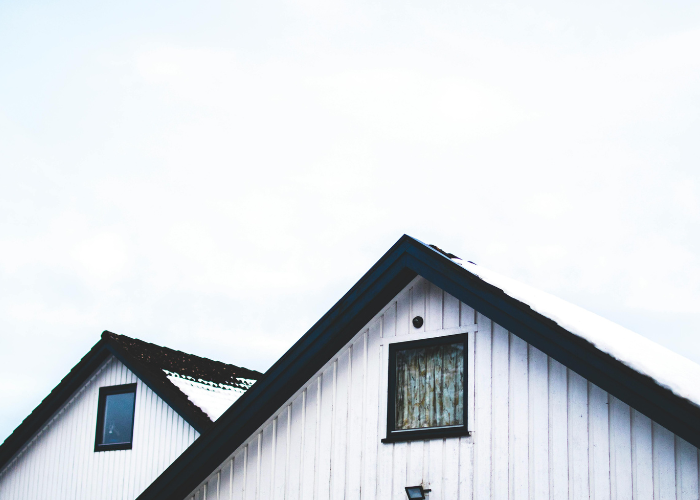In a world where extreme weather events are on the rise, having a storm-proof roof is no longer just a luxury—it’s a necessity. For homeowners, ensuring that their roofs can withstand the fury of Mother Nature is crucial for the safety and longevity of their homes. This blog post will guide you through everything you need to know about making your roof storm-proof. We’ll cover common vulnerabilities, essential components, the best materials, and maintenance tips, all designed to keep your home safe and secure. Let’s get started!
Understanding Your Roof’s Vulnerabilities
Before you can storm-proof your roof, you need to understand its weaknesses. Common roof vulnerabilities during storms include damage from high winds, hail, and heavy rain. These elements can wreak havoc on your home’s topmost layer.
Wind is a major concern because it can lift shingles, create openings, and allow water to penetrate the roof structure. It’s essential to have a wind-resistant roofing system to prevent this. Hail can cause significant damage, denting metal roofs or cracking tiles. Heavy rain, especially when combined with existing damage, can lead to leaks and water damage inside your home.
Different roofing materials react differently to these storm conditions. Asphalt shingles, for instance, are susceptible to wind and hail damage. In contrast, metal and tile roofs offer better resistance, but they come with their own set of challenges, such as the potential for denting in metal roofs or breakage in tiles. Understanding these vulnerabilities will help you make informed decisions when enhancing your roof’s storm resilience.
Essential Components for a Storm-Proof Roof
A storm-proof roof isn’t just about choosing the right materials; it’s also about ensuring all components work together seamlessly. Proper insulation and ventilation play a critical role in maintaining the roof’s integrity during extreme weather. Insulation helps regulate temperature and prevents moisture buildup, while ventilation allows for proper airflow, reducing the risk of heat damage.
Quality underlayment and sheathing are also vital. Underlayment acts as an additional barrier against water intrusion, while sheathing provides structural support and a base for roofing materials. Both components must be installed correctly to create a cohesive shield against storm damage.
Don’t underestimate the importance of roofing fasteners, such as nails and screws. They must be corrosion-resistant and properly installed to ensure the roof holds together even in the fiercest storms. By focusing on these essential components, you’ll build a robust foundation for your storm-proof roof.
Choosing the Right Roofing Material
Selecting the right roofing material is a critical step in creating a storm-proof roof. You’ll want to consider materials that offer durability, longevity, and resistance to wind, hail, and rain. Let’s explore some popular options.
Metal roofs are an excellent choice for storm resistance. They can withstand high winds and are less likely to become damaged by hail. Metal roofs can also last up to 50 years or more, making them a long-term investment for homeowners.
Tile roofs, including clay and concrete, are another durable option. They can handle extreme weather well, but it’s essential to ensure proper installation to avoid breakage. Tiles also have an aesthetically pleasing appearance, adding value to your home.
For those living in specific climates, such as Minnesota, it’s important to consider climate-specific materials. For instance, roofs with high wind ratings are essential in hurricane-prone areas, while roofs with excellent snow load capacity suit colder regions.
Maintenance Tips for a Storm-Proof Roof
Regular maintenance is key to ensuring your roof remains storm-proof. Start by scheduling routine inspections, ideally twice a year, to identify and address potential issues before they escalate. Look for loose or damaged shingles, rusted flashing, and clogged gutters.
Timely repairs are crucial for maintaining your roof’s storm resilience. Address any problems promptly, whether it’s replacing missing shingles or fixing leaks. Ignoring small issues can lead to more significant damage during a storm.
Clean your gutters regularly to ensure proper drainage. Clogged gutters can result in water overflow, which may damage your roof and cause leaks. Keeping your roof in top shape through regular maintenance will extend its lifespan and provide peace of mind during stormy seasons.
Investing in Your Home’s Protection
A storm-proof roof is an investment in your home’s protection. By fortifying your roof, you’ll not only enhance its durability and longevity but also enjoy several additional benefits. One of the most significant advantages is the potential for reduced insurance premiums. Many insurance companies offer discounts to homeowners with storm-resistant roofs, saving you money in the long run.
A storm-proof roof can also increase your home’s property value. Potential buyers are more likely to be interested in a home with a roof that can withstand extreme weather, providing added peace of mind and security.
Furthermore, investing in a storm-proof roof contributes to a safer and more comfortable living environment for you and your family. You’ll have the confidence that your home is well-protected, no matter what nature throws your way.
Creating a storm-proof roof is essential for homeowners looking to protect their investments and ensure their family’s safety. By understanding your roof’s vulnerabilities, focusing on essential components, choosing the right materials, and committing to regular maintenance, you can build a resilient roof that stands strong against any storm.
We encourage homeowners to assess their roofs and take the necessary steps to enhance storm resilience. If you’re unsure where to start, consider scheduling a professional roof inspection and maintenance service. With expert guidance and support, you can fortify your roof and enjoy peace of mind during stormy seasons. Don’t wait until the next storm hits—take action today!

